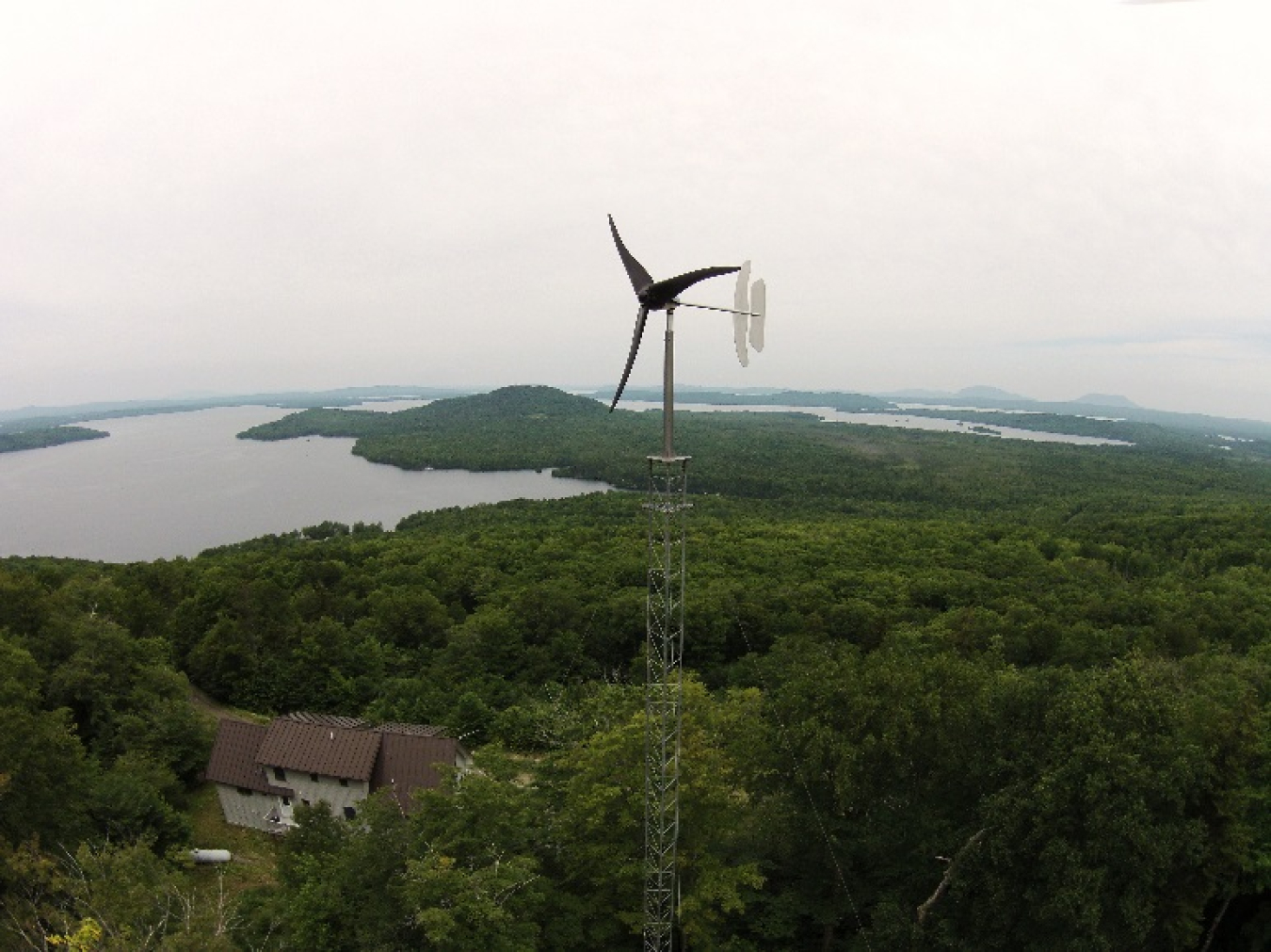A recent Pacific Northwest National Laboratory report is the first of its kind to benchmark costs for small wind projects installed in the U.S.
Wind Energy Technologies Office
May 8, 2018
This 1.7-kW Pika Energy T701 wind turbine is at a residence in Maine. Photo by Pieter Huebner / Off-Grid Enterprises
A recent Pacific Northwest National Laboratory (PNNL) report, Benchmarking U.S. Small Wind Costs, is the first of its kind to benchmark costs for small wind projects installed in the United States. The report provides a starting point to help expand the U.S. distributed wind market by identifying potential opportunities to reduce costs and providing a benchmark to track cost-reduction progress.
To set the benchmark, the report summarizes cost information from 70 projects (57 residential systems and 13 commercial systems) using 10 turbine models in 16 states. The total capacity of the systems analyzed amounts to 1.5 megawatts. The team found that the average cost of a representative residential system was $11,953/kilowatts (kW), whereas a commercial system costs, on average, $7,389/kW.
With funding from the Wind Energy Technologies Office, researchers at PNNL have been studying the distributed wind market and associated, often high costs of deploying wind technology. Distributed wind power is used at or near where it is generated, as opposed to wind power from wholesale generation, where power is sent to consumers via transmission lines and substations. Distributed systems can range in size from a 5-kW turbine powering a home to a multimegawatt turbine providing electricity to a manufacturing facility.
Additional distributed wind work conducted recently by PNNL includes holding a Distributed Wind Workshop for federal agencies in February. This workshop was designed to educate federal agency stakeholders about distributed wind, its potential applications, the economics of wind projects, and how to deploy distributed wind at federal sites.
PNNL also produces the yearly Distributed Wind Market Report, which has become a go-to resource for the wind industry. The report provides a year-to-year comparison of growth and trends, including costs, number of deployments, performance and capacity factors, types of turbines used, customer type, domestic and international markets, and market drivers and barriers.

